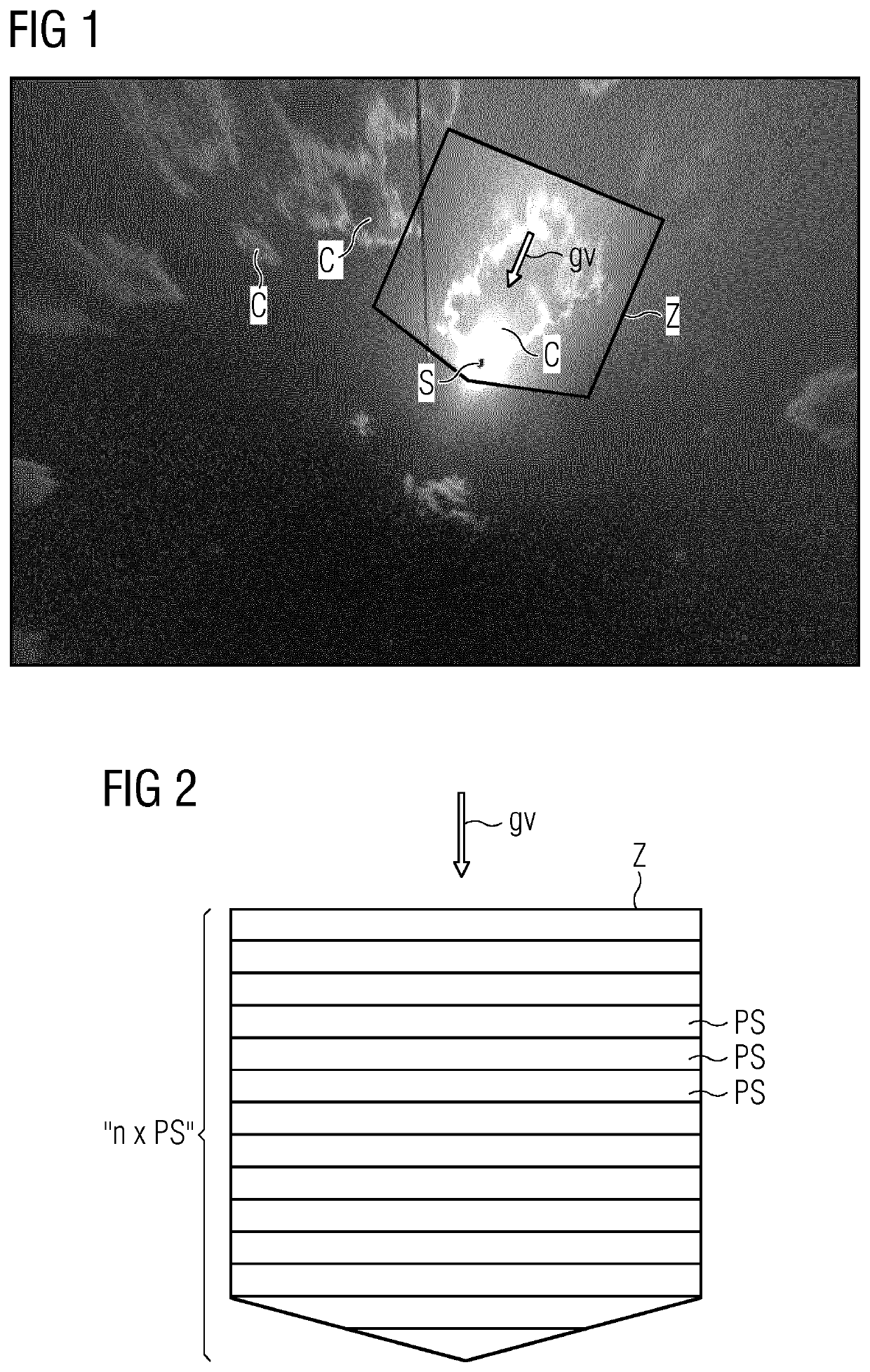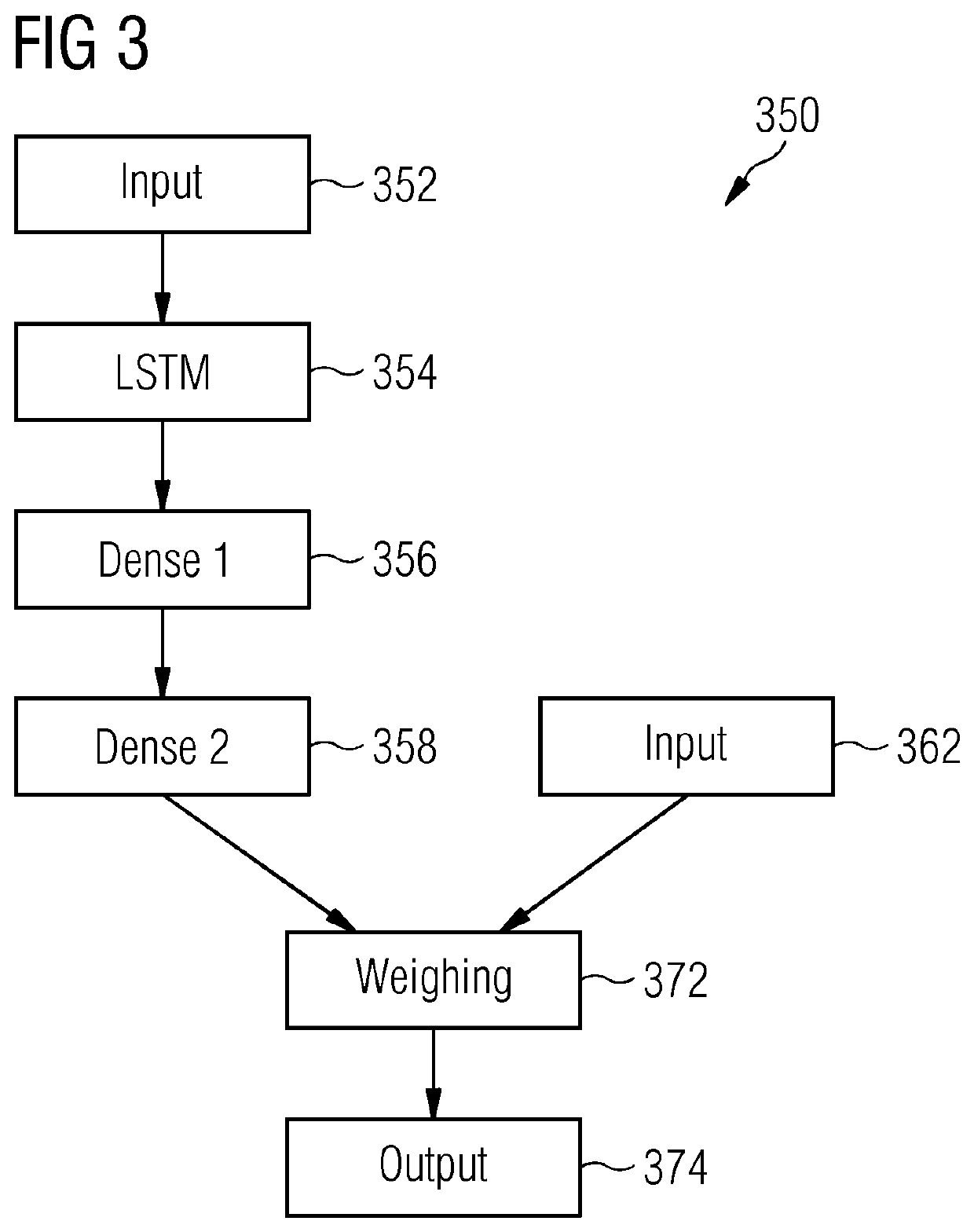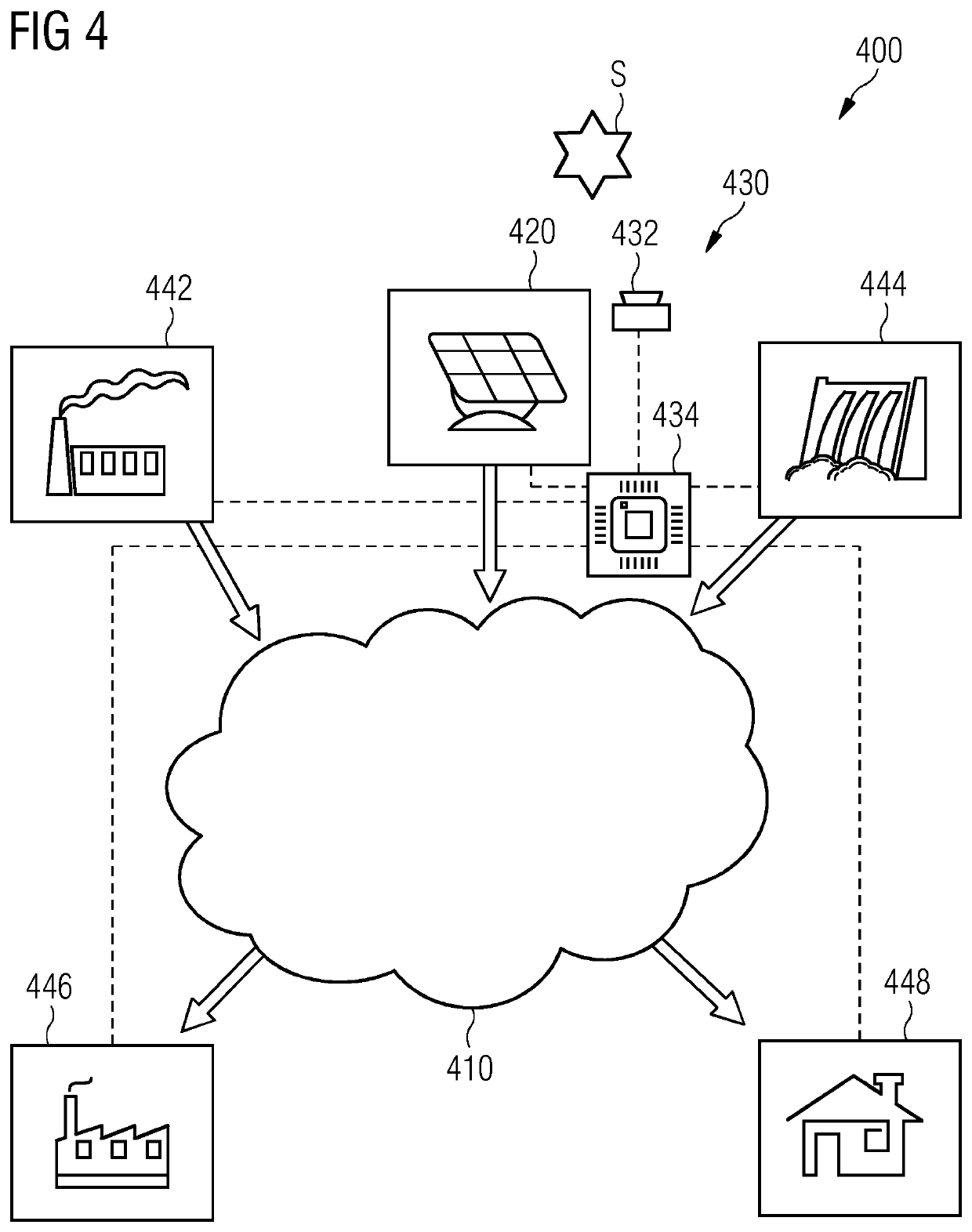Predicting sun light irradiation intensity with neural network operations
a neural network and sun light technology, applied in the field of photovoltaic power generation, can solve the problems of inability to accurately predict the cloud dynamics of a local area of a photovoltaic power plant within a short time horizon such as about 20 minutes, and the estimate of the cloud coverage made by a human being can only be qualitative, so as to improve the prediction results, reduce the impact or the weight of some selected data, and improve the effect of impact or the weight of some other selected data
- Summary
- Abstract
- Description
- Claims
- Application Information
AI Technical Summary
Benefits of technology
Problems solved by technology
Method used
Image
Examples
Embodiment Construction
[0061]The illustration in the drawing is schematic. It is noted that in different figures, similar or identical elements or features are provided with the same reference signs or with reference signs, which are different from the corresponding reference signs only within the first digit. In order to avoid unnecessary repetitions elements or features which have already been elucidated with respect to a previously described embodiment are not elucidated again at a later position of the description.
[0062]FIG. 1 shows an image I taken from the sky above a non-depicted photovoltaic power plant. The image I may be used as one of the at least two captured input images for performing the method for predicting the intensity of sun light irradiating onto ground, which method is described with different embodiments in this document.
[0063]In FIG. 1 the sun, which can be seen as the brightest region, is denominated with a reference numeral S. Clouds, some of which are denominated with a referenc...
PUM
 Login to View More
Login to View More Abstract
Description
Claims
Application Information
 Login to View More
Login to View More - R&D
- Intellectual Property
- Life Sciences
- Materials
- Tech Scout
- Unparalleled Data Quality
- Higher Quality Content
- 60% Fewer Hallucinations
Browse by: Latest US Patents, China's latest patents, Technical Efficacy Thesaurus, Application Domain, Technology Topic, Popular Technical Reports.
© 2025 PatSnap. All rights reserved.Legal|Privacy policy|Modern Slavery Act Transparency Statement|Sitemap|About US| Contact US: help@patsnap.com



